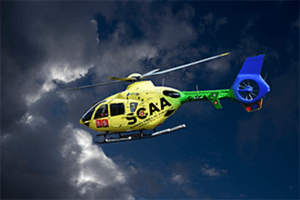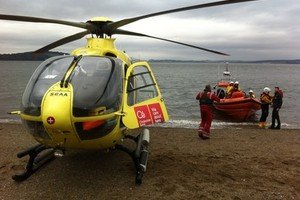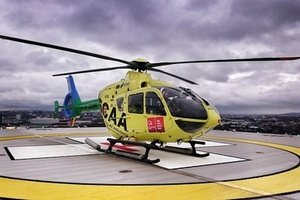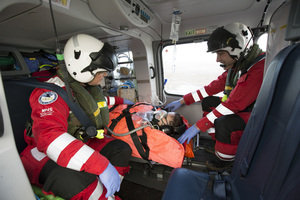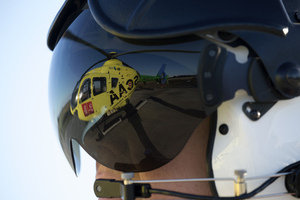
What to do if you see one of our air ambulances landing nearby
On an average day, our air ambulance crews respond to two or three call outs, but this number can double or even triple on any given day. Until that emergency call comes in, our crews don’t know which part of Scotland’s 30,000 square miles they’ll be tasked to.
After serving the people of Scotland for over 11 years now, it’s very possible that you’ve seen our distinctive yellow, green and blue helicopters flying overhead, or perhaps even landing nearby. Depending on the circumstances, our pilots will search for the nearest and safe place to land, which could be a field, in a park, or on a road. Witnessing our life-saving crews at work can be very exciting, especially up close, but there are a lot of things to consider when an air ambulance lands in a public area.
Here are some tips to help you and our crews stay safe.
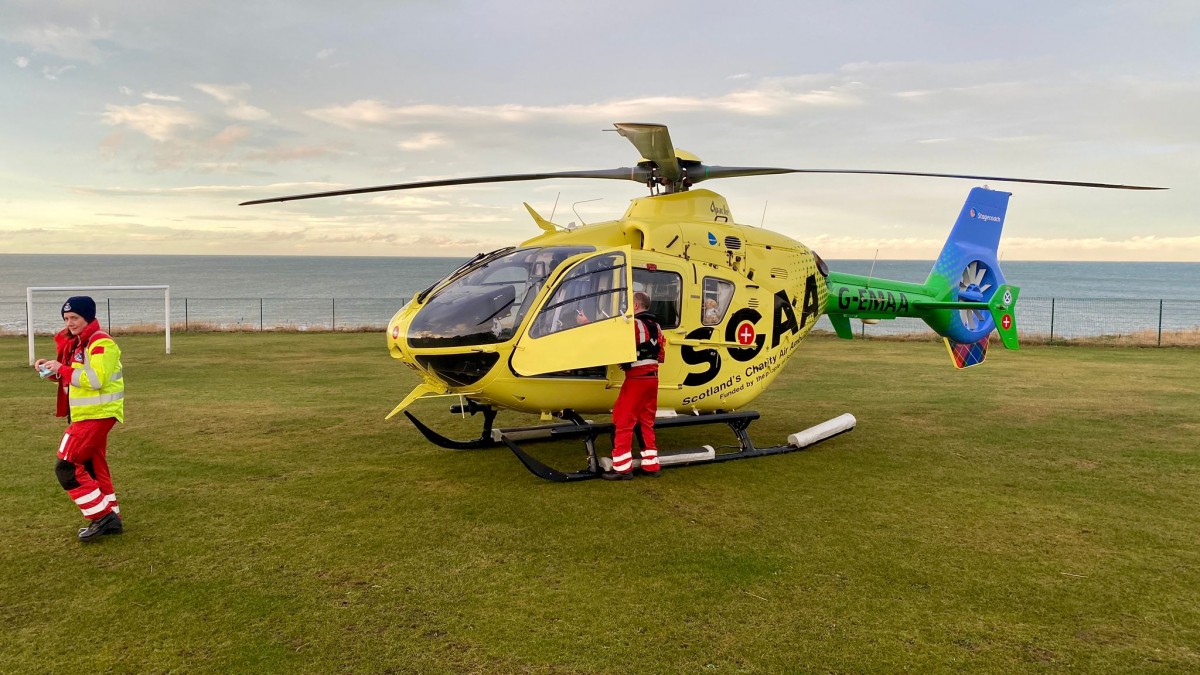
Keep your distance
Whilst it may be tempting to rush over to the aircraft, the best thing you can do if you see one of our helicopters landing is to keep as far back as possible until the helicopter has landed, the rotors have stopped moving and the engine has been switched off. The downdraft created by helicopter blades is very powerful and could easily knock you down.
Hold on to your belongings, children and pets
That downdraft when taking off, landing and hovering can be extremely powerful. Make sure you hold on to bags, umbrella and anything you’re holding and be sure to keep your children or pets safe and close by.
Give our crew space and time to get to the emergency
Our paramedics’ primary focus after landing will be getting access to the patient and then assessing their condition. Many of the emergencies we attend are life-threatening, so the faster they can do this, the sooner the patient can receive the treatment they need. Our pilots will usually stay with the aircraft to ensure its safety.
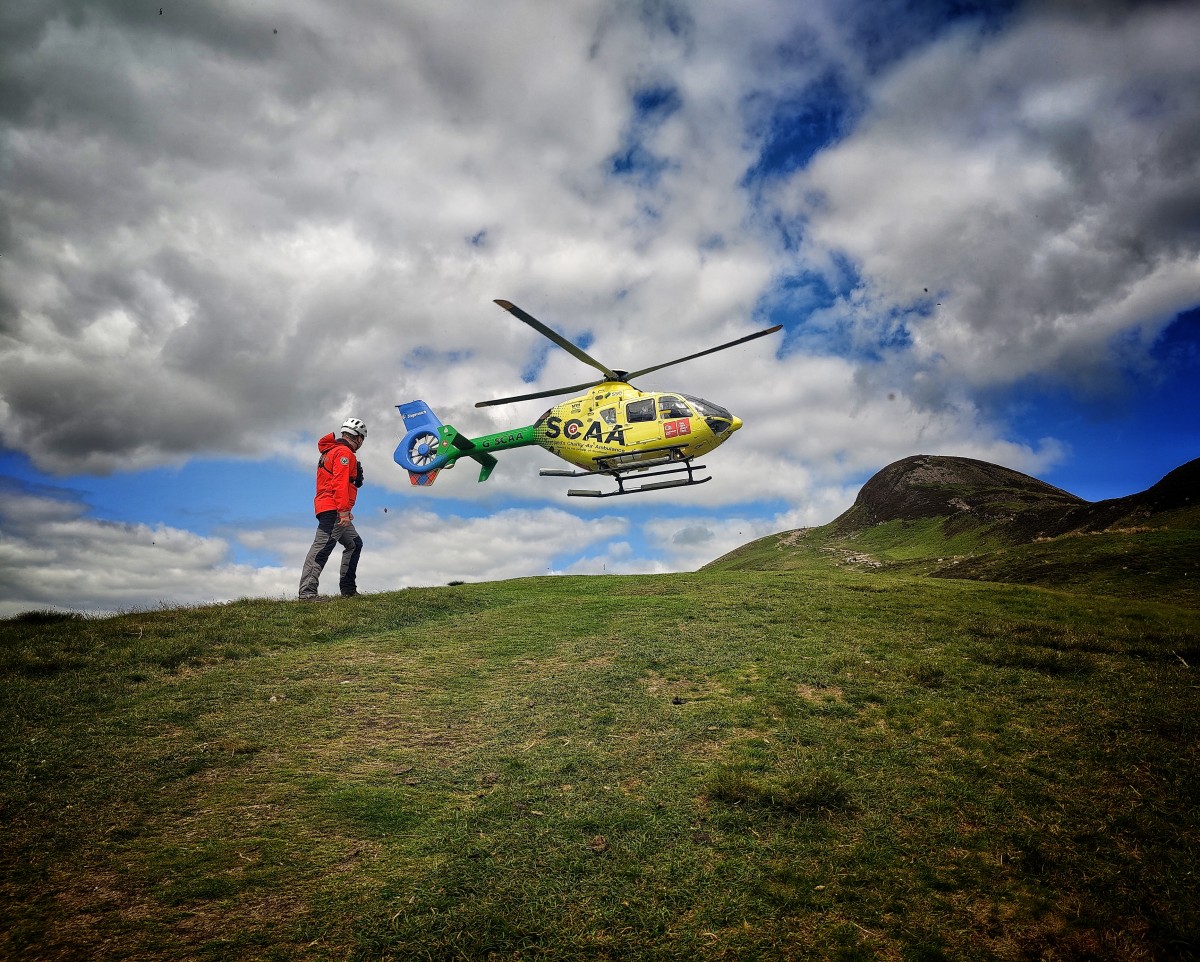
Keep the aircraft clear for when our paramedics return
Please give space for our crew to return to the helicopter, especially if they are loading a patient into the aircraft. Ensuring a quick departure means getting the patient to hospital as soon as possible, which in many cases can greatly increase their chances of survival.
Keep your distance until the helicopter has left the site
Just as when the helicopter is landing, please do not approach the area until the helicopter has flown away from the site. When airborne, that downdraft can be significant. For various reasons, there is also the possibility that our pilot may need to abort the take off and land again.
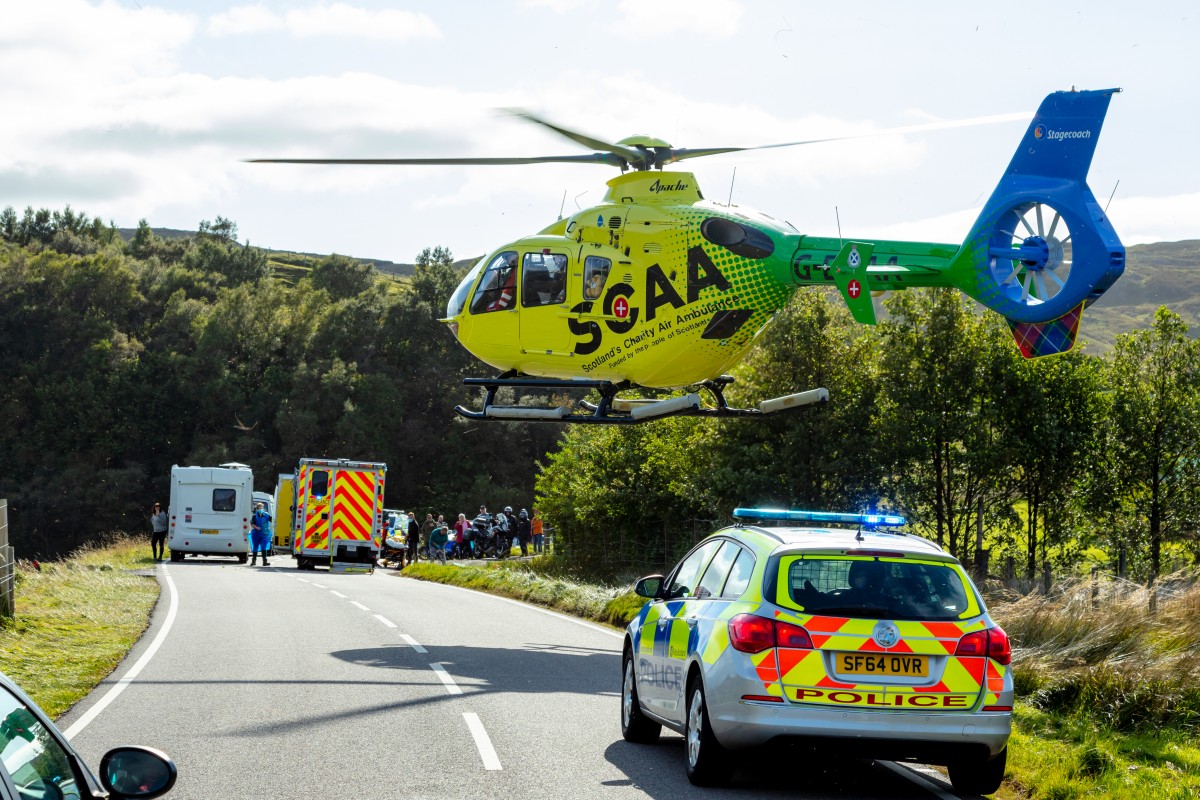
Take care when taking photographs and video
We love it when you share photographs and videos of our helicopters and crew at work, but please be mindful of the situation to ensure that no patients are included in the images and that you’re not obstructing our crew from doing their job.
We rely on the support of the Scottish public to keep flying and saving lives all over Scotland. Whether you donate, volunteer or just help our crews to do their job when they land nearby, we sincerely appreciate your support.
